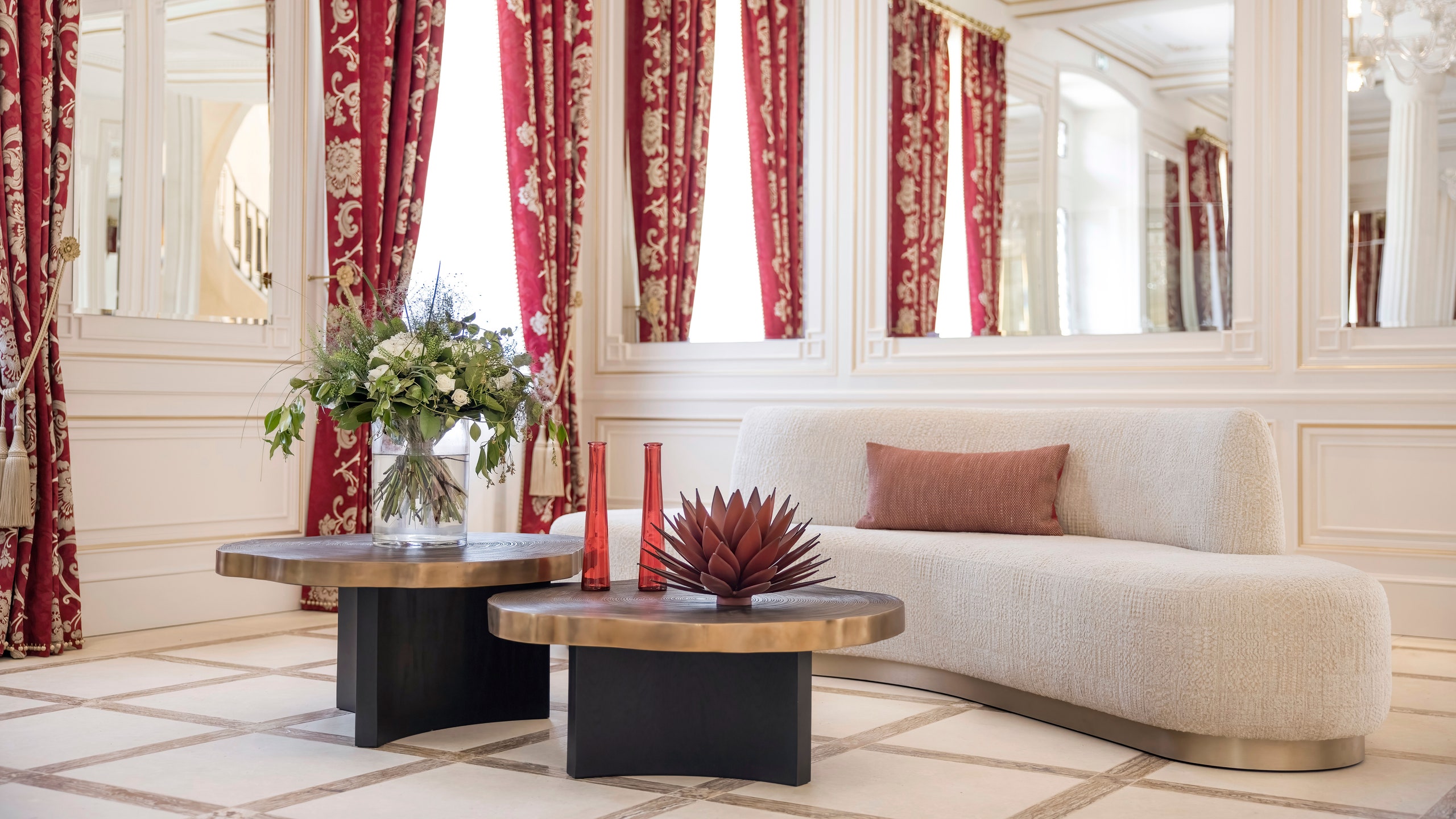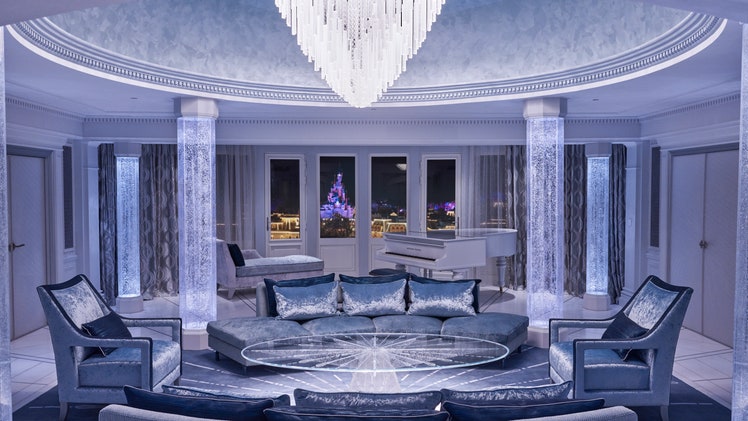Review: La Nauve Hôtel & Jardin
Photos




Why book?
Cognac has been crying out for a top-notch hotel for years and years—about 300 years, ever since the cognac industry took off. Previously, the best places to stay were the old hôtels particuliers belonging to the household-name brands, such as Hennessy’s Château de Bagnolet and Martell’s Château de Chanteloup. But they were (and remain) invitation-only. Now there’s La Nauve.
Set the scene
You could arrive at La Nauve by boat—it’s just a nautical mile or two downstream for the centre of Cognac along France's Charante. That really would be the way to do it. And nauve is, come to think of it, the French word for boat. But life is fraught with complications and minor disappointments and you’ll probably arrive by car.
La Nauve is at the end of a once fancy street that is now rather faded and decidedly mixed in character. This should not concern you. The gates of La Nauve will swing open at your approach to reveal a bucolic scene—a blindingly white 19th-century neoclassical villa that might almost have been transported from one of the more salubrious corners of Surrey, flanked by two barely less picturesque outbuildings of similar vintage originally used for cognac production, set in 12 acres of lawn and garden, dominated near the centre by a mighty and awe-inspiring sequoia. (It had a twin, which was sadly felled during a violent storm in the 1990s.)
Much of the garden has been freshly redesigned and replanted. It’s already looking gorgeous, but as it beds in and matures and the climbing plants take over the trellises down by the water-lily pond, it will just get lovelier and lovelier. The little shipping canal that runs parallel to the river, with its original hoists, gantries and other trappings of the 18th- and 19th-century cognac trade, adds another layer of steampunk exoticism.
As you arrive in the main house, the first thing you’ll notice is the abundance of gleaming pale marble in the lobby and the central bifurcated staircase. The second thing you’ll notice is the astonishing chandelier above the bar on the ground floor—which will cause you to reserve judgement about all that marble and simply gaze up in slack-jawed wonder. It’s a mesmeric agglomeration of hundreds of pale-blue Murano-glass discs, hovering like a school of sea creatures or an armada of spaceships. Truly fantastic—and as beautiful in the daytime as it is at night.
The backstory
Vincent and Florence Gombault bought La Nauve in 2017. They began renovating it with a view to using it as a holiday home—Madame Gombault’s family is from Cognac—but changed their minds and decided to turn it into part of their nascent Almae Collection of hotels and residences instead. The first Almae Collection property, L’Armancette, opened in 2019 in the French Alps. Palazzo Garzoni, in Venice, followed in spring 2022, with La Nauve hot on its heels. Five more Almae properties are in the works.
The rooms
There are currently 12 rooms: eight in the main house and four in the smaller of the two outbuildings, known as the Petit Chais. Permission from the local authorities is pending for the addition of a further six rooms.
As with any decent cognac, the style of the place is quite difficult to pin down and open to interpretation. Certainly there’s more than a hint of the Alps about it, odd as that may sound. The use of wood, not only in the floors and ceilings but also the headboards, doors and the utterly marvelous built-in wardrobes and cupboards, is an unexpected delight. The use of woods of different hues and textures (including pieces of an old fallen sequoia) to create inlaid patterns is beautifully executed. The local ébéniste responsible should have a street named after him. There are other nice touches, such as luminous onyx panels, brass details in the parquet floor and, here and there, carved birds perched in the rafters. The sound of birdsong in the garden is yet another of the glories of La Nauve.
Room 6, in the main house, is the largest room overall, and has a fine, unobstructed view of the lawn and garden extending all the way to the river; but many of the smaller rooms, even those on the street sides, are equally attractive in different ways, with angular ceilings, exposed beams and outdoor terraces.
Food and drink
The hotel’s two restaurants, Notes (in the main house) and the Brasserie des Flâneurs (in the larger of the two outbuildings), along with the chandelier-dominated bar, are outstanding additions to the local food-and-drink scene. Notes is named as such in reference to the aromatic notes present in cognac—making the chef, Anthony Carballo, a master blender. Still young, he worked his way up under superstars such as Yannick Alleno at Le Meurice and Phililppe Labbé at the Shangri-La Paris. At Notes he offers two “blind tasting” menus, one of seven courses, one of four. This not only relieves diners of the burden of choosing but also introduces an element of suspense and surprise, almost of adventure. This reviewer went the whole seven-course hog; highlights included a lighter-than-air tempura-style crab with fennel and caviar, and a strawberry meringue with basil so zingy it might have caused a surge in the Cognac grid.
Notes is elegant, cozy and intimate; but in summer there can be few more delightful spots to lunch or dine than at one of the outside tables at the Brasserie des Flâneurs.
The spa
No spa, at least not yet—though there is a picturesque pool in the garden.
The neighborhood
Crouin, previously an independent town, became a suburb of Cognac in the 19th century. It’s close enough to the centre of the town to be perfectly convenient but far enough away to seem, on the river side at least, part of the countryside.
The Charante is a splendid river—it’s not difficult to understand why Henri IV thought it the prettiest in his entire kingdom. You need no reason whatsoever to board the hotel’s electric vedette for a gentle cruise into town, no particular mission or appointment or destination—it’s pure pleasure just to be on the water, especially in such a stealthy little vessel, which makes barely a sound.
The service
Team La Nauve is young, energetic, smiling, brimming with enthusiasm and, in the bar and fine-dining restaurant, with expertise. Breakfast, served in the Library in the main house, was a highlight of this reviewer’s visit, thanks to the sweetness and warmth of the welcome, itself a kind of sunrise. The addition of a few more books to the shelves, however, might help make the Library appear more convincingly library-like at other times of the day.
For families
There are two connecting rooms and three pairs of rooms that can be turned into two-bedroom suites by closing an outer door. Though kids are excluded from the most common and popular of Cognac experiences—drinking cognac—there are plenty of other more wholesome activities to keep them amused, especially in the warmer months. Picnics on the river, e-bike rides, canoeing, hot-air ballooning—these are all easily arranged through the hotel’s concierge. Irène Doreau-Campisi, aka XO Madame, a Cognac local and an ace guide with whom the hotel works closely, choreographs experiences of different kinds, typically in her immaculately restored, café-au-lait-colored Citroën 2CV, which youngsters will adore.
Eco effort
According to the management, eco efforts at La Lauve have so far been focused on the on-site cultivation of herbs and vegetables for use in the kitchen, along with the addition of a beehive and a chicken coop. Locally produced organic bathroom amenities are supplied by L’Atelier des Vignes. Or to put it another way: there’s plenty of scope for further measures to be introduced.
Accessibility
There’s a lift in the main house, and one adapted room adapted with more space to accommodate the use of a wheelchair, but not equipped with grab rails or emergency cords. Most—though not all—of the garden is accessible to wheelchair users.
Anything left to mention?
A distillery tour, even if you have taken one (or many) before, is comme il faut during a visit to Cognac. The big four Cognac producers—Hennessy, Rémy Martin, Martell and Courvoisier—have got this down pat. But by all means do give consideration to smaller, possibly less familiar producers. This reviewer’s visit to the tiny Delamain facility in the neighboring town of Jarnac—still within and indeed an essential part of the Cognac appellation—was a revelation. They bottle in a year what others bottle in three days. For time-capsule charm combined with single-minded seriousness of purpose, there can be few to match it.
All listings featured on Condé Nast Traveler are independently selected by our editors. If you book something through our links, we may earn an affiliate commission.
More To Discover
All products featured on Condé Nast Traveler are independently selected by our editors. However, when you buy something through our retail links, we may earn an affiliate commission.





